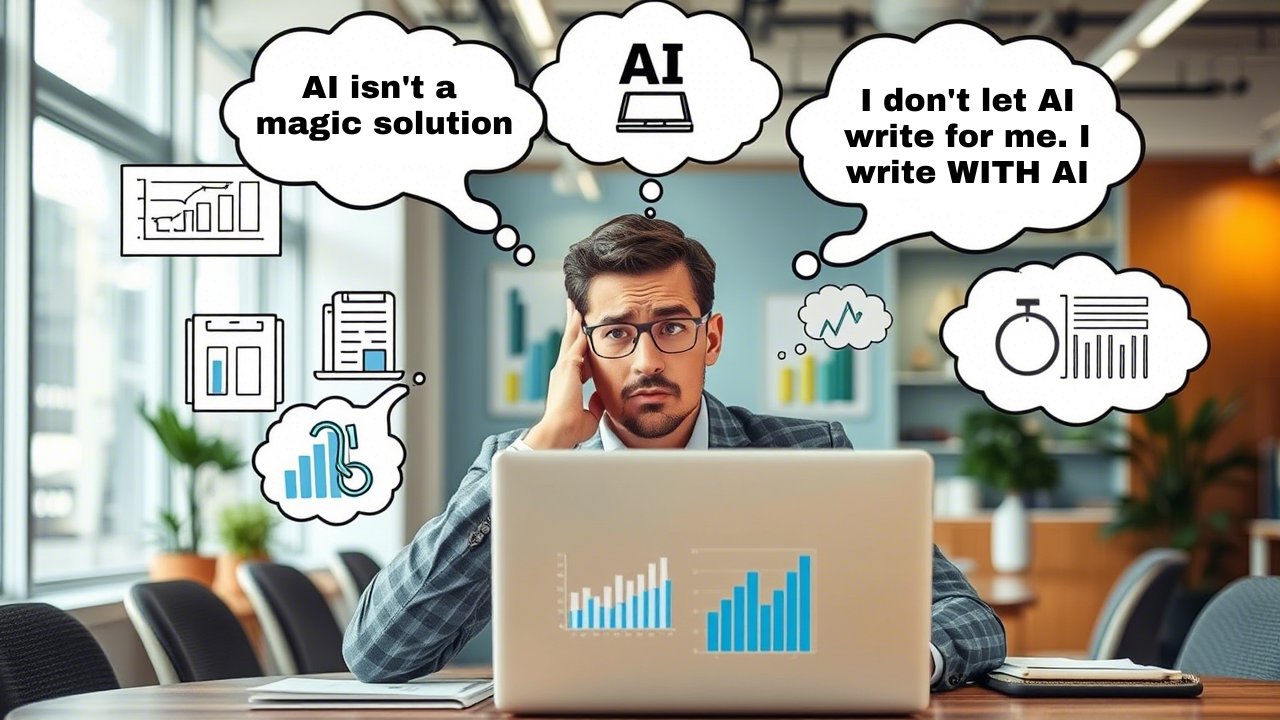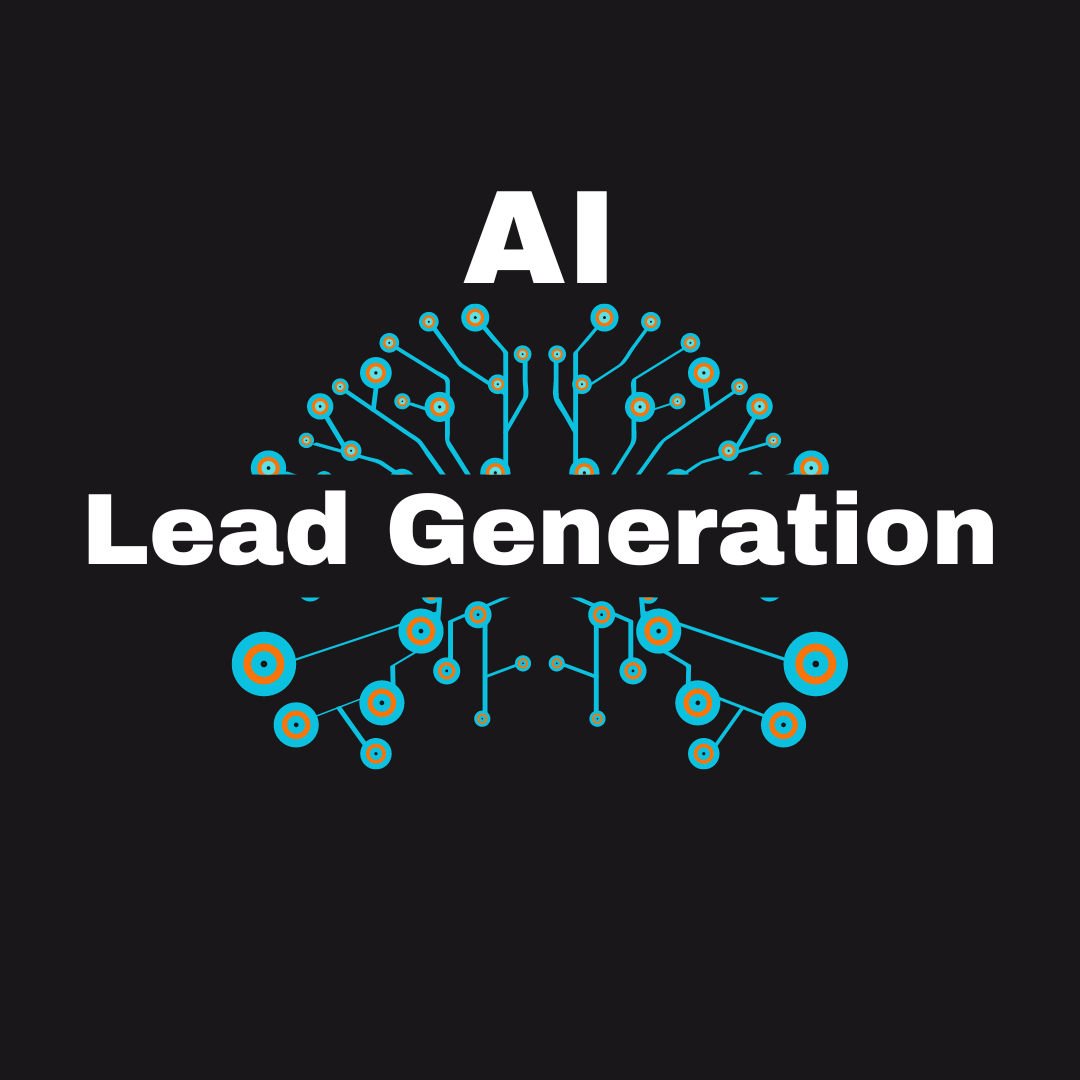The Evolution of Lead Generation:
How AI is Changing the Game
Key Takeaways
- AI isn’t a magic solution – it needs time to analyze data and create results
- Instead of replacing jobs, AI will help create 97 million new jobs in the next two years
- AI makes customer interactions more personal, not less
- Small businesses can use AI too – it’s not just for big companies
- AI helps find quality leads, not just more leads
- By 2025, AI will power 95% of customer interactions
- AI tools are becoming user-friendly and don’t need special tech knowledge
Introduction to AI Misconceptions in Lead Generation
Let’s face it, there’s a ton of wrong ideas about AI in lead generation that stop businesses from using it well. Ya know what I mean? These myths make companies miss out on great chances to find better leads and grow their business. Some folks think AI is gonna take their job, while others think it’s just too hard to use or too expensive.
But here’s the thing – AI is changing how businesses find and talk to new customers. It’s not scary tech that only huge companies can use. It’s actually becoming a super helpful tool that any business can benefit from.
In this article, we’re gonna bust the biggest myths about using AI for lead generation. We’ll show you what AI really can (and can’t) do, so you can make smarter choices for your business. And don’t worry – we’ll keep it simple and skip the tech jargon!
The “Magic Solution” Myth – AI’s Real Role in Lead Generation
One of the biggest myths about AI is that it’s some kinda magic wand that fixes all your lead problems instantly. This just ain’t true! Many business owners get disappointed when they try AI and don’t see overnight success.
AI is more like a smart assistant than a magician. It needs time to:
- Learn from your data
- Find patterns in how your customers behave
- Test different approaches
- Get better over time
Think of AI like a new employee – they don’t become experts on day one. AI lead scoring systems need time to understand what makes a good lead for your specific business.
The real power of AI comes from its ability to handle boring, repeating tasks while learning from results. This gives your team more time for the stuff humans do best – like building relationships and closing deals.
As one marketing director told me: “We expected AI to double our leads overnight. What we got was better – it slowly improved our lead quality and helped us stop wasting time on dead-end prospects.”
The truth is, good lead generation still takes work. AI just makes that work smarter and more focused. For example, AI-powered lead qualification processes can help you sort through potential customers much faster, but you still need a solid strategy behind it.
Job Replacement Fears vs. Reality
“The robots are coming for our jobs!” How many times have ya heard that one? It’s probably the most common fear about AI. Sales teams worry that AI tools will replace them, leaving them without work.
But here’s the real deal: AI isn’t replacing sales jobs – it’s changing them for the better.
Research shows AI will actually help create about 97 million new jobs in the next two years. That’s a lot of work! What’s happening is that AI is taking over the boring parts of lead generation that nobody likes anyway:
- Sending follow-up emails
- Updating CRM data
- Sorting through leads
- Scheduling meetings
This frees up your sales team to do what humans do best – build relationships, understand complex needs, and close deals. One sales rep I work with said it best: “AI doesn’t take my job, it takes away the parts of my job I hate.”
AI email outreach platforms can handle routine communication, but they can’t replace a good salesperson who knows how to listen and solve problems. They’re more like a helper that does the grunt work.
Companies that use AI right don’t fire salespeople – they help them sell more by focusing their time on the best leads and most important conversations. It’s about making your team stronger, not smaller.

Does AI Make Sales Impersonal?
Many people think AI makes sales feel cold and robotic. They worry customers will feel like they’re talking to a machine instead of a person. But this gets AI all wrong!
The truth? AI can actually make your sales efforts MORE personal, not less. How’s that possible? Well, AI is super good at:
- Remembering details about each lead
- Tracking preferences and past interactions
- Spotting patterns in behavior
- Suggesting the right message at the right time
Hyper-personalized lead generation techniques use AI to tailor messages to each person’s specific interests. This means your outreach can be more relevant, not less.
By 2025, experts think 95% of customer interactions will use AI in some way. But this doesn’t mean robots talking to humans. It means humans using AI to have better conversations with other humans.
For example, AI can help you know when a lead usually opens emails, what topics they care about, or what problems they’ve mentioned before. This helps you reach out in ways that feel thoughtful and timely.
As one customer success manager told me: “Our AI tools help us remember things about thousands of customers that a human brain could never track. This makes our conversations feel more personal because we never forget what matters to each customer.”
AI Accessibility: Not Just for Big Companies
There’s this idea that AI is only for huge companies with big budgets and tech teams. This myth has stopped about 79% of small and medium businesses from trying AI tools. What a shame!
The reality is that AI tools have gotten way simpler and cheaper in the last few years. You don’t need a computer science degree or millions of dollars to use them anymore.
Today’s AI lead generation tools are:
- User-friendly with simple interfaces
- Affordable with monthly subscription options
- Pre-trained for common business tasks
- Easy to set up without coding knowledge
Small businesses might actually benefit MORE from AI than big ones. Why? Because when you have a small team, saving time on routine tasks makes a huge difference. AI chatbots can help small businesses respond to leads 24/7, even when the office is closed.
A local real estate agent shared with me: “I’m a one-person show competing with big agencies. My AI tools help me follow up with every lead and stay organized. It’s like having an assistant working around the clock.”
Check out these top AI lead generation tools that work for businesses of all sizes. Many offer free trials or starter plans that let you test the waters before investing fully.
The Human Touch in AI-Generated Content
Another big myth is that content created by AI feels fake or robotic. People worry that AI-written emails or messages will sound generic and turn customers off.
But modern AI doesn’t just spit out bland, cookie-cutter content. When used right, it can create messages that feel personal and relevant to each reader.
Good AI content tools can:
- Adapt to your brand’s voice and style
- Include specific details about the lead
- Reference past interactions
- Address specific pain points
For example, AI lead nurturing strategies can create follow-up sequences that change based on how a lead responds. This makes the conversation feel natural, not scripted.
The key is using AI as a starting point, not the final word. The best results come when humans review and refine what AI suggests.
A marketing writer I know puts it this way: “I don’t let AI write for me. I write WITH AI. It suggests ideas and handles repetitive parts, but I make sure everything sounds human and matches our brand.”
The goal isn’t to remove humans from the process – it’s to give them better tools. Good AI enhances human creativity rather than replacing it.
Quality vs. Quantity: AI’s Approach to Lead Generation
One persistent myth is that lead generation is all about numbers – getting as many contacts as possible. And some people think AI just helps you spam more people faster.
But modern AI lead generation is actually about QUALITY over quantity. It helps you find and focus on the leads most likely to become customers.
Instead of casting a wide net, AI helps you:
- Identify traits of your best customers
- Find more prospects with similar characteristics
- Score leads based on likelihood to convert
- Predict which leads need attention now
- Focus resources where they’ll have the biggest impact
This targeted approach is much more effective than old-school mass outreach. AI-powered lead prediction can help you spot promising prospects before they even reach out.
The data shows this works better too. A smaller number of highly qualified leads typically generates more sales than a huge list of random contacts.
One B2B sales director shared: “We used to celebrate getting 1,000 new leads a month. Now we get 200, but they’re so much better qualified that we actually close more deals. AI helped us focus on quality.”
This approach is better for everyone – your team wastes less time on dead-end leads, and potential customers get more relevant outreach instead of generic spam.
How to Effectively Implement AI in Your Lead Generation Strategy
Now that we’ve busted those myths, let’s talk about how to actually use AI for lead generation the right way. Many businesses struggle not because AI doesn’t work, but because they don’t implement it well.
Here’s a simple approach to adding AI to your lead generation:
- Start with one specific problem Don’t try to transform everything at once. Pick one pain point, like lead scoring or follow-up emails.
- Choose user-friendly tools Look for AI tools with good interfaces and support. Check out these game-changing AI lead generation tools for options.
- Feed it good data AI needs quality information to learn from. Clean up your CRM before implementing AI.
- Train your team Make sure everyone understands how to use the AI tools and what to expect from them.
- Start with human oversight In the beginning, have team members review AI recommendations before acting on them.
- Measure results Track key metrics before and after implementing AI to see what’s working.
- Refine over time Use what you learn to adjust your approach and expand to other areas.
LinkedIn automation tools can be a great starting point, since LinkedIn is such a valuable lead source for many businesses.
Remember that success with AI isn’t instant. Give new tools and processes at least 3-6 months before judging results. The longer AI works with your data, the better it gets.
A successful CRM manager advised: “We see AI implementation as a journey, not a switch we flip. Each quarter, we get better results as the systems learn our business and we learn how to use them effectively.”
By starting small and building on successes, you can transform your lead generation process without disrupting what already works.

Frequently Asked Questions
How long does it take to see results from AI lead generation tools?
Most businesses start seeing improvements within 1-3 months. The exact timeline depends on your sales cycle length, the quality of your existing data, and how well the AI tool is implemented. Expect incremental improvements rather than overnight transformation.
Do I need technical staff to implement AI lead generation?
Not necessarily. Many modern AI tools are designed for business users without technical backgrounds. Look for solutions with good user interfaces, templates, and support resources. Some advanced customization might require technical help, but you can start with user-friendly options.
How much do AI lead generation tools typically cost?
Prices vary widely based on features and scale. Basic tools start around $50-100 per month, while enterprise solutions can cost thousands. Many tools offer tiered pricing based on usage (number of leads, contacts, etc.). Start with a smaller plan and upgrade as you see results.
Can AI help with lead generation for my specific industry?
Yes! AI lead generation works across industries, though some sectors have more specialized tools than others. B2B companies often see strong results, but B2C businesses benefit too. The key is finding tools that can be trained on your specific customer journey.
Will my leads know I’m using AI?
Not if you implement it thoughtfully. Good AI augments human capabilities rather than replacing the human touch entirely. Use AI for research, prioritization, and initial outreach, but maintain personal connection for relationship building. Review AI-generated content to ensure it matches your brand voice.
How do I choose between all the AI lead generation tools available?
Start by identifying your biggest pain points in the lead generation process. Look for tools that specifically address those challenges. Request demos, read reviews from businesses similar to yours, and take advantage of free trials. This guide can help you compare popular options.
Can AI help me generate leads from LinkedIn?
Absolutely! LinkedIn is a prime source for B2B leads, and AI tools can help you make the most of it. From Boolean search techniques to profile optimization and sponsored content strategies, AI can enhance your LinkedIn lead generation efforts.
.
